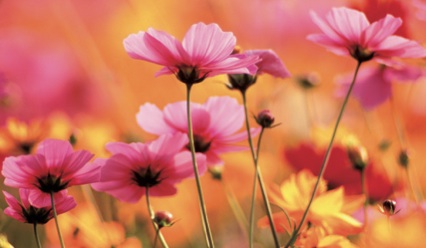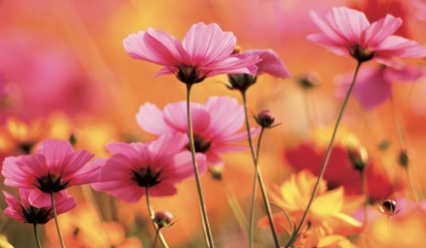Tubs and baskets need watering daily if the weather is dry, preferably first thing in the morning or in the evening to avoid scorching leaves.
Tubs and baskets need watering daily if the weather is dry, preferably first thing in the morning or in the evening to avoid scorching leaves. After a wet April, a patchy May and the beginning of June more like November, let’s hope that July brings a major improvement to the weather.
With the gardening season being at least two weeks behind normal, if you‘ve still got gaps in the garden, add some instant colour and buy established plants of geraniums, cosmos, New Guinea impatiens and other flowering plants that will flower throughout the summer months. Dead head your baskets, tubs and herbaceous borders regularly to keep plants producing new flowers all summer.
Liquid Feed
Tubs and baskets need watering daily if the weather is dry, preferably first thing in the morning or in the evening to avoid scorching leaves. Remember to liquid feed weekly. Even if you’re using compost which contains slow release fertiliser, they’ll still benefit from a bit of liquid feeding.
If you’re going away on holiday, it’s advisable to get someone to water your tubs and baskets for you. Indoor plants can be stood on capillary matting – the other end is put into a container full of water and the plants will take up the water as they need it. Make sure you thoroughly wet the matting first. Tomatoes and cucumbers need water regularly during hot weather – preferably in the morning – this keeps the atmosphere humid and stops the plants staying damp overnight which can cause problems with grey mold or botrytis.
Stake and tie in taller herbaceous plants before they get too tall and floppy to manage. Dead heading as flowers finish will often encourage a plant to produce another flourish of flowers after the main flowers have finished. Whilst many ornamental plants have been struggling to get going this year, nothing seems to deter the weeds from romping away, make the most of a warm sunny day and pull or hoe up any weeds still lurking in your borders.
Cosmos Deal with Blackspot!
Blackspot on roses has been a problem this year, encouraged by ideal weather conditions for the disease. Remove any foliage turning yellow and dropping off rose plants and spray fortnightly with Roseclear, this will also keep any aphids under control. Woolly Aphid is a pest of fruit trees that is getting more and more common. It appears as fluffy white cotton wool-like patches on fruit tree stems and ornamental trees. The insect is hidden under the fluff and sucks the sap from stems. Use Provado Ultimate Bug Killer RTU as a control, but follow the directions as there is a minimum harvest interval.
Watch out for signs of leatherjackets on lawns, they cause irregular brown patches and loose areas of turf on the lawn. Leatherjackets are the pupae of the Crane fly (Daddy Long Legs), once the fly hatches out it lays its eggs within 24 hours and the
larvae hatch out approximately 14 days later. Grubs are dark grey, brown and legless. These can appear from mid-August to the end of September. Often the presence of starlings and thrushes on the lawn can indicate grubs in the ground. If you do spot their damage water the lawn with Provado Lawn Grub Killer.
Salad crops
Once tomato plants are as tall as you require them, cut out the main shoot, one leaf above the last truss of fruit you want. Keep sowing salad crops such as lettuce, endive, spinach and radish in the vegetable patch to get a continuous harvest. Use very a fine netting (Mosquitoplast) to cover cabbages, cauliflowers, carrots and other particularly susceptible vegetables against flies, pigeons and butterflies.
To get a crop of new potatoes in October, or for Christmas, plant seed potatoes in tubs in July and August. Growth will finish in October, but leave the tubers in their pots until required for cooking. Remember, they’ll need frost protection once the winter frosts appear in November and December.
It seems only five minutes since the spring bulbs were in flower, but they’ll be appearing in garden centres from the end of August! If you want hyacinths in flower for Christmas, they must be planted and put into a dark cool place in September. Most varieties require an 8-10 week cool period followed by 2-3 weeks of warmer conditions to bring them into flower. Use a compost specifically for bulbs as it will contain charcoal to keep the soil sweet.
This month’s tips are provided by Ann Winwood of Lealan Garden Centre, Shipley.







